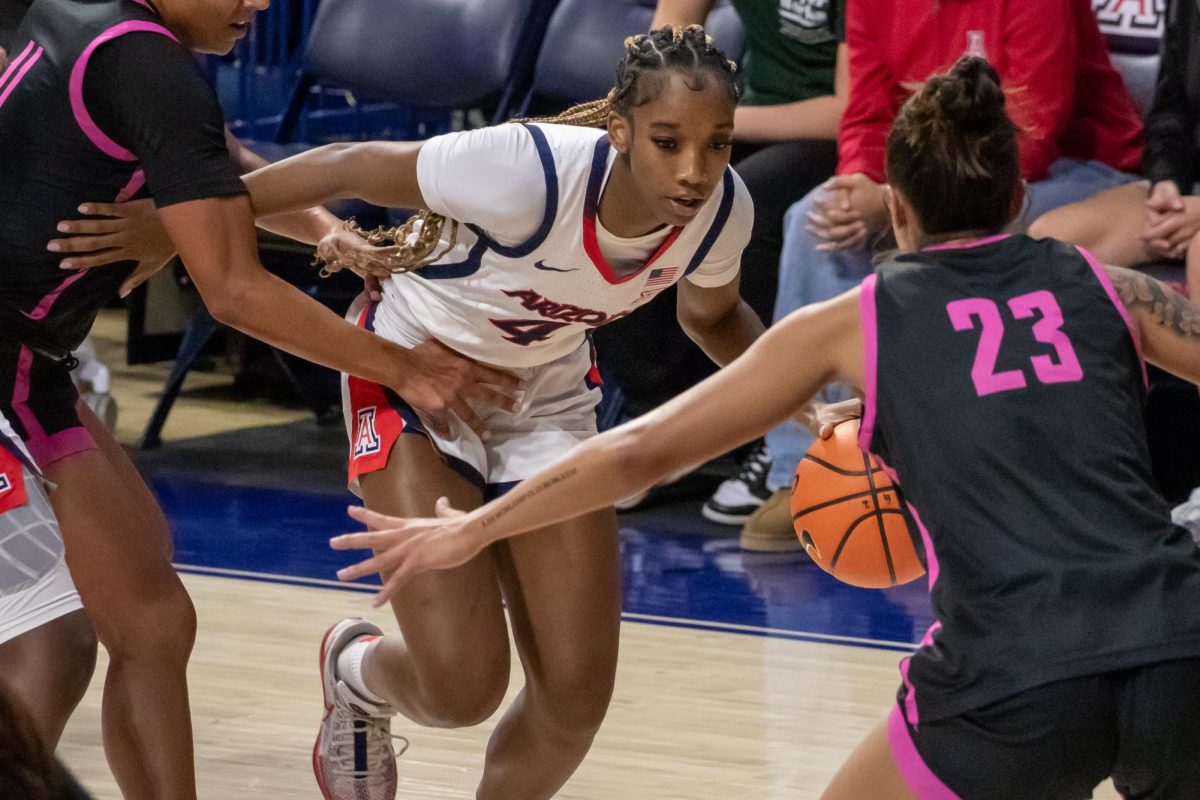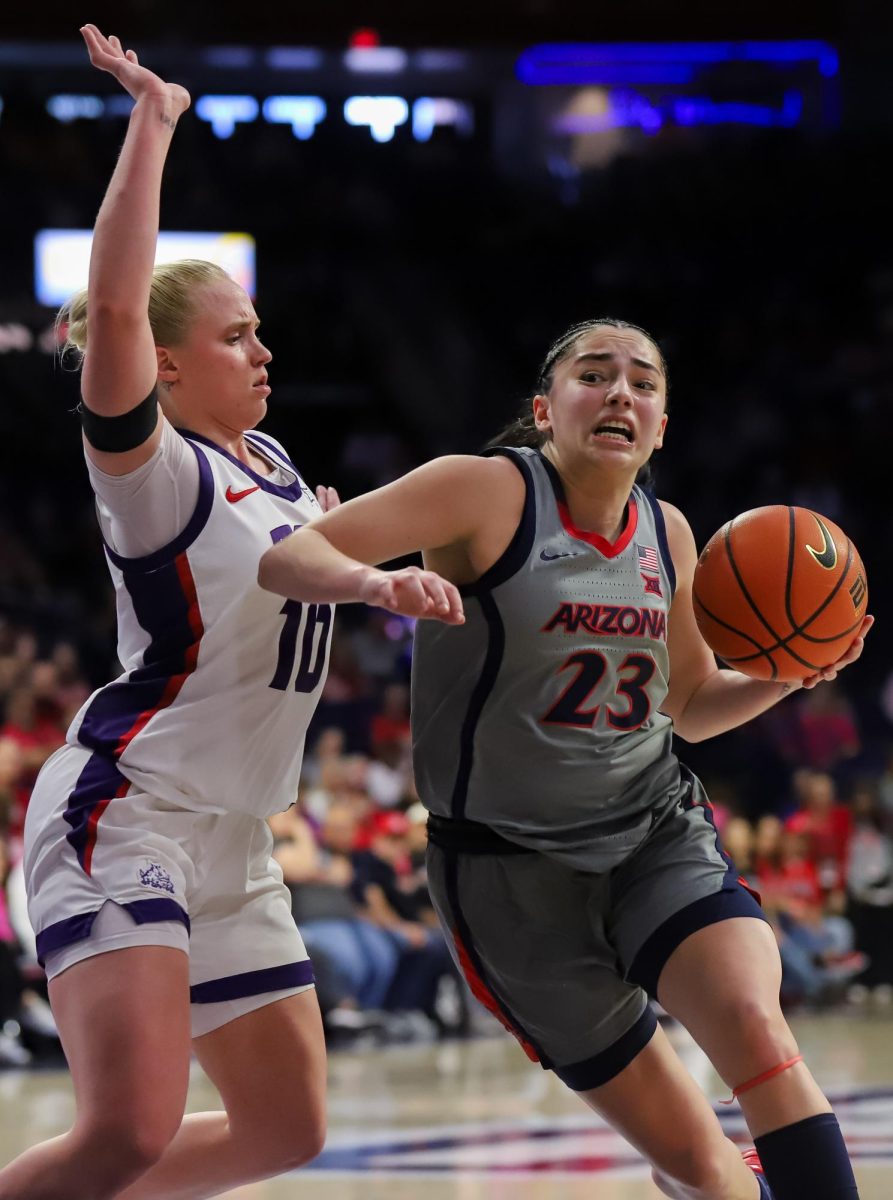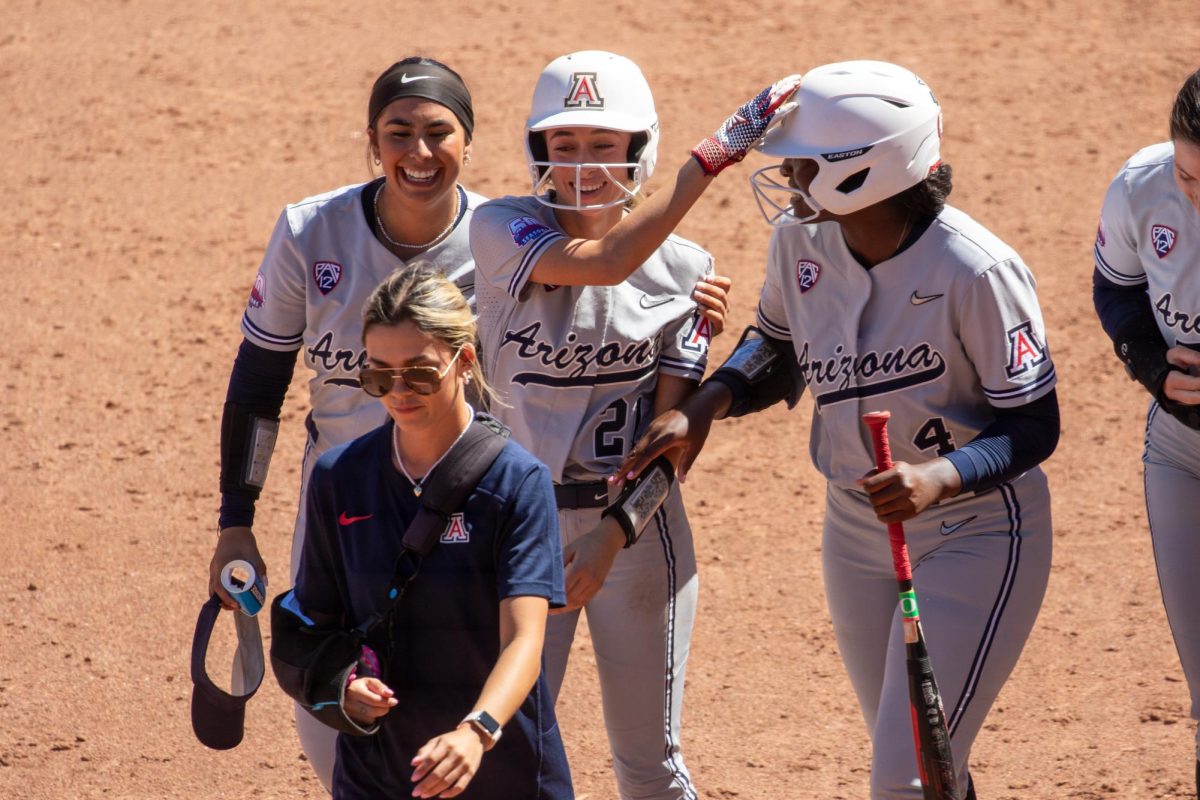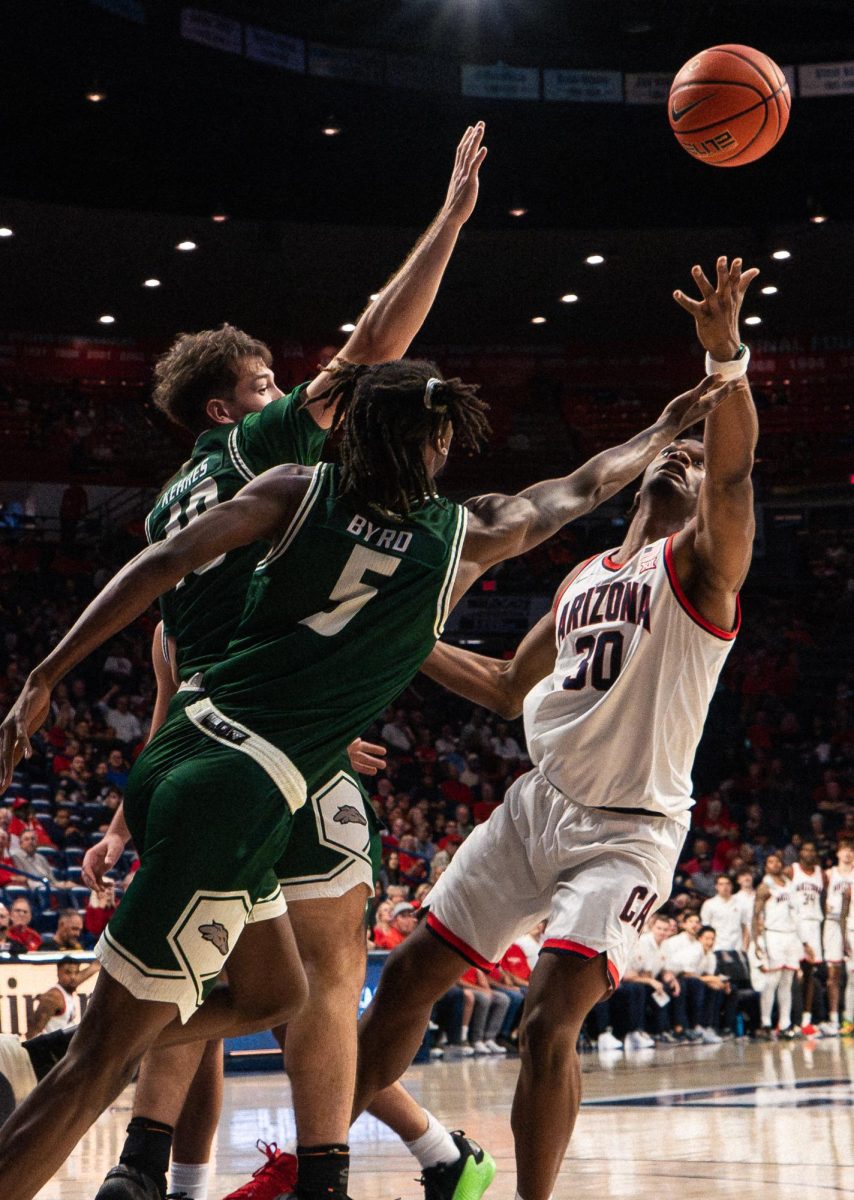During the first few seasons of UA head coach Mike Stoops’ time in Tucson, the offense didn’t really have an identity. When Sonny Dykes arrived three years ago, the thought was that the Wildcats would transform into the “”Air-Zona”” offense, imitating the offensive scheme from the Texas Tech teams Dykes coached prior to joining Stoops’ staff.
While Arizona does average more passing yards than rushing yards per game, it’s hardly an exclusive aerial attack. In fact, the Wildcats are one of the more balanced offense units in the nation. So how does Dykes decide which way to dissect opposing defenses each week?
“”Whatever the easiest thing for us to do is. It changes from week to week and I think that’s what I like about our offense,”” Dykes said. “”If they’re giving us the run, we run it well enough to be able to run it and if they give us the pass, we throw it well enough to be able to throw it.””
That’s essentially coach-speak for, “”We can move the ball through the air or the ground, it’s just depends what the situation calls for.””
The Wildcats’ stats don’t dispute that notion. Out of 120 Division I teams, the UA’s 30 points per game are good enough for the No. 37 mark in the country. Arizona is No. 27 in rushing offense (118 yards per game) and No. 29 in passing offense (257 yards per game), which translates to the 14th ranked offense in the nation.
And even after Oregon’s 47-20 throttling of USC last weekend — a game the Ducks racked up 613 yards on the Trojans — the Wildcats lead the Pacific 10 Conference in total offense averaging 445 yards a game. With Arizona having a high-powered, dual-threat offense, starting center Colin Baxter said it makes games easier on players because it keeps the defense on its heels.
“”I think being able to do one opens the other up and I think we do a good job of taking what teams give us,”” Baxter said. “”If a team is letting us try and run the ball and putting eight in coverage and nobody in the box then we can run the ball. If they try and pack the box we’ll pass the ball.””
Against Stanford, Arizona passed the ball. A lot.
Redshirt sophomore quarterback Nick Foles completed 40-of-51 passes for 415 yards and three scores during Arizona’s 43-38 win against the Cardinal on Oct. 17. During the Wildcats’ next game, Foles had an off night — he suffered from flu-like symptoms and was responsible for four turnovers — and the ground game picked it up. Led by sophomore Keola Antolin’s second-half performance and a bevy of wide receiver run plays, Arizona pounded out 209 yards and two touchdowns on 46 attempts.
A big reason for the offense’s success is the offensive line. Arizona has only allowed four sacks during the season, the fourth-best mark in the nation. The unit has improved as the season progressed, and is able to open big running lanes or provide good pass protection.
“”It’s fun to watch them. What makes the line so excited is when guys break a big run or we get a big throw down field, because they know it starts up front with them,”” Foles said. “”We try to tell them all the time, ‘It starts up front with y’all,’ and they do a great job of it and it excites everybody when we run or pass the ball well.””
But UA players and coaches know that the early-season success doesn’t mean anything. While national rankings and good statistics look nice for the moment, it looks better if the Wildcats can remain at that level throughout the entire season.
With a difficult schedule during the rest of the five-game slate to close the season — Saturday’s home game against Washington State, at No. 23 Cal, home against No. 7 Oregon, at ASU and at No. 12 USC — the No. 21 Wildcats will have pick their game up to stay ahead of the pack.
“”We’ve just got to continue to keep getting better and keep improving and these guys understand it,”” said offensive line coach Bill Bedenbaugh. “”We’ve preach to them about doing their job every single play and that’s what’s happened.
“”You never worry about the score,”” he added. “”You worry about doing your job, all 11 guys, and things will work themselves out.””








